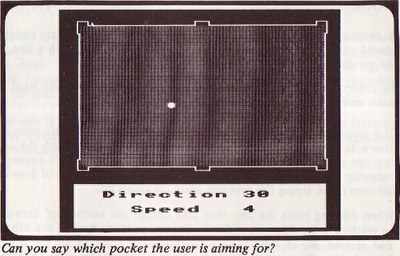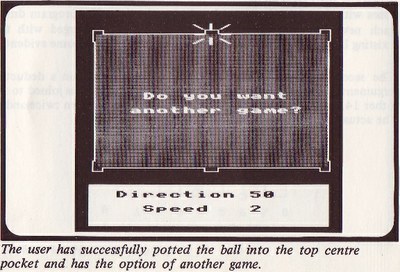Snooker
The first version of this software was developed by Richard Millwood as a Mathematics teacher at Scott Lidgett School in 1979. Its intent was to simulate a snooker ball, but when shown to school pupils it became clear that it engaged them in an inquiry to find the relationship between number and angle.
Later, it was proposed to make it a resource for the Secondary Mathematics Individualised Learning Experiment project (SMILE). It is resource number 1624 and was developed further for the BBC Micro. In 1984 the SMILE project published 'MICRO-SMILE - The First 30 SMILE programs' and Snooker became part of that package.
This is an extract from the MICRO-SMILE booklet:

Estimate the angle and pocket the ball! The outline of a snooker table is drawn with a ball somewhere on the table. The user is asked for the angle (zero is 'north' with the angles measured clock-wise as in a bearing) and then the speed (1 is slow, 10 is fast).
The ball bounces around the table and if it does not fall into a pocket it slowly comes to a rest for another try.
The program is highly motivating. Children without a full understanding of the measure of angles will enjoy playing and will ask for information. (There is always at least one pocket to aim for with an angle less than 90˚). Also, there is a feed-back for the child since it is immediately clear whether a particular angle was much too big or just too small.


